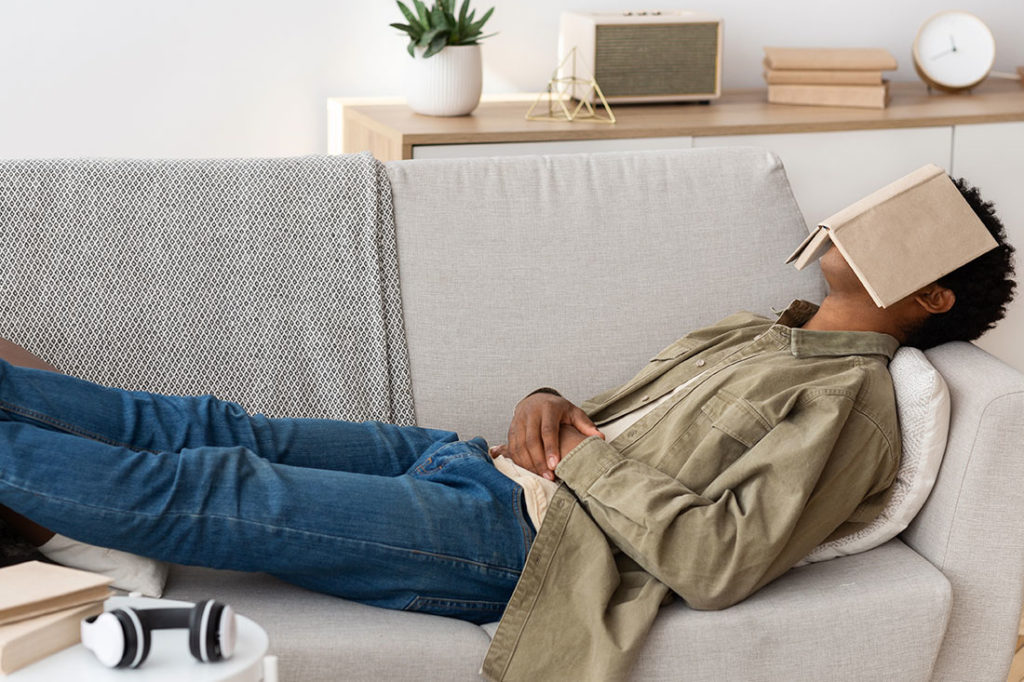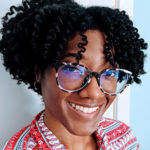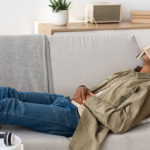Taking a nap should be the easiest thing you do. It’s certainly easier than working your way through college or maintaining a full-time job. Compared with those things, rest is a breeze. It takes 10 seconds to walk to the bed and perhaps another 1.6 to climb inside. Once you’re there, strenuous thinking dissipates (or should) as the body settles.
But as simple as rest appears, it has an annoying habit of being the most elusive thing ever. It’s not that I don’t want to get a full night’s sleep or take a nap during the day. The problem is that it’s deceptively hard. What should come naturally to me—lying down and letting my physiology do its thing—has never worked well. Maybe that’s why I’m alert 90% of the time. I didn’t take naps as a kid, and going to bed at 30 requires a mental intervention.
My brain at 1 a.m.: So when are we going to sleep?
Me: I would go to sleep, but you never let me…
Us: *Deep, synchronized sigh*
And yet, I don’t feel like I’m missing much. I get seven hours of sleep on average and work easily during the day. At 3 p.m., I do not feel mentally, physically or emotionally taxed. So when I see people taking naps regularly or falling asleep within 4 minutes, I think, Good for them, but I could never pull that off.
Don’t follow my lead, though. The scientific community suggests I’m wrong to avoid napping just because I’m terrible at it. A 2019 study of a Swiss population found that people who napped once or twice weekly had fewer cardiovascular issues. A more recent study (2021) published in the International Journal of Environmental Research and Public Health found that afternoon naps improve cognition.
If the benefits of napping are clear, how should we integrate rest into our fast-paced world? Should companies invest in nap pods with built-in alarms, as Google and HuffPost have? Or should workers attempt to power through the day? The answer is probably somewhere in the middle. Naps are useful, but I secretly wonder whether a group of potential outliers (aka me) will have a different opinion.
Practicing Rest
Setting up a challenge to nap for 30 days is a challenge in itself. Because I am literally hashtag “woke,” I’ve never considered the best napping conditions. So I Googled “how to nap” for a little guidance. A snippet from Mayo Clinic warned that if I napped after 3 p.m., I could kiss a good night’s sleep goodbye. Napping for longer than 30 minutes was bad, too—I might wake up groggy and unmotivated to work. The latter was particularly scary. As a writer working from home, having enough time to write, edit and then edit some more is my best defense against missed deadlines.
I also discovered how much darkness humans need to fall asleep, and basically, that loose unit of measurement is all of it. If you can see anything besides pitch black, both the internet and countless experts say you’re doing it wrong.
Mark Zhang, CEO and founder of Manta Sleep, backed this up. “Exposure to light, even artificial ones, sends the wrong signal to our brain, so if you need to sleep in the daytime or with the lights on, sleep masks are extremely beneficial to help block out light,” he says.
Armed with the basics, I decided to nap at 2 p.m. on weekdays for 30 minutes or less. I set daily alarms on my phone so I wouldn’t forget to sleep, or worse, make the mistake of oversleeping. Then I spent an hour hunting down the sleep mask I got for Christmas but never intended to use.
The first day of the challenge was the hardest. Lying in bed with a sleep mask on, I was acutely aware of everything. First, there was my heart tapping a nervous drumroll against the edge of my chest. Has it always been that loud? I wasn’t sure, but the irregular thumping was uncomfortable to think about. Meanwhile, more thoughts swirled in my head. I kept wondering how much time had passed, because if I took 30 minutes to fall asleep, I wouldn’t nap in time. If I didn’t nap in time, I would lie there forever missing important emails and sacrificing deadlines.
Within a week, I had taken a grand total of zero naps. Instead of too much light or noise, my anxious thoughts about work became the real distraction.
Chasing a Breakthrough
Most people fall asleep in 20 minutes or less, which makes me feel better about taking substantially longer. The reality of napping is that the total “cost” of a quick one could be 50 minutes—20 minutes to reach sleep and 30 minutes to engage in sleep. The time it takes to drift off is called sleep latency, which could determine the quality of some naps. A 2018 study published in the Nature of Science and Sleep Journal found that high sleep latency (increasing minutes) indicates poor sleep health.
That’s not surprising. I can feel the blue light from my phone threatening my sleep most nights. If I scroll too long and allow my sleep latency to increase, I get headaches and wake up throughout the night. I don’t check my phone before “challenge” naps, but maybe the damage is already done. Did my body adjust to a one-hour latency because I have no real night routine?
Creating a better sleep schedule would probably take longer than 20 days. So I decided to tackle the easier problem: eliminating anxious thoughts before a nap.
But first, I would have to stop worrying about sleep altogether. Zhang says that will only make me more alert as stress hormones take over my body, negating the power of rest. “The goal isn’t just to take a nap or actually sleep but to step away from stress and take a little mind break,” Zhang says. “You can use the time to listen to meditation apps or do anything to de-stress.”
On some level, I needed a pre-nap routine. So far I had only imagined the perfect sleep environment: total darkness, a plush comforter and an alarm to wake me up. What could I do to build a seamless transition between work and sleep?
On a whim, I walked to the garage to find my Schwinn hybrid bike, a half-road, half-trail beast with 10 speed settings. Looking at it, I grew confident that exercise could be a great lead-up to a power nap. I extended two fingers to the back tire and gave the rubber a forceful squeeze; hardly any air rebounded against my finger pads.
Tight as a drum and ready to ride.
For the next three weeks, I cycled for 20 minutes in the afternoon instead of heading straight to sleep. That required a little routine of its own, like warming up, stretching and bundling warm layers to block the November chill. Once I was finally riding, I remembered how it felt to cycle consistently. The icy wind scorched my lungs, and my thighs burned as they worked to climb steep neighborhood hills. But I could tolerate that much better than lying in bed with anxious thoughts and a hammering heartbeat. Cycling is fun, physical and clears my mind unlike anything else.
Riding my bike became the gateway to falling asleep. I wasn’t sure why or how, but I felt more relaxed as I settled into bed—plus a bit tired. I stopped worrying about work, and my sleep latency dropped to 10 minutes.
Emerging from a Power Nap
As someone who rarely naps, I had to get used to the practice of consistent rest. After reading all the benefits, my hopes were high: I expected an immediate rush of energy, sharpness and productivity. But like any practice, the benefits revealed themselves gradually.
The first thing I noticed was how sluggish I felt upon waking. I tried to avoid that by taking brief naps, but timing didn’t seem to matter. In the beginning, I felt like a zombie regardless of how long I slept. The idea of returning to a desk and staring at a bright screen was too sudden, too hard, too off-putting. So I didn’t work, and those afternoons felt like lost opportunities.
But things got better. Instead of rejecting the sleepy goodness I was after, my body got with the program. It adjusted to my new routine, and soon enough, I could ride my bike, take a nap and return to work with ease. That’s when the benefits of rest began to shine through. Whether I was writing, editing or doing stints of busywork, something inside me wanted to do those things. In the past, a mundane task was just a mundane task. But now I had extra motivation to attack things head-on instead of procrastinating.
I loved everything about those quiet, superhuman moments. Writing became easy as words flowed from my brain to my fingers to a blank Google document. I was in a state of flow, that elusive thing every writer needs to keep banging out words. Looking back on various projects, my nap-assisted articles read better than articles I spent more time writing.
It aligns with something I read in Rest: Why You Get More Done When You Work Less by Alex Soojung-Kim Pang. He writes, “It is not constant effort that delivers results but a kind of constant, patient, unhurried focus that organizes the investigator’s attention when at work and is present but watchful during periods of ease. Devoting yourself only to the first (to ratio, in other words) and neglecting the second (intellectus) might make you more productive in the short run but will make your work less profound in the long run.”
In the end, science was right. I was wrong to avoid midday rest because I didn’t understand it or know how to achieve it. Now I know that rest is a practice you cultivate for life. And if you do it right, you can produce meaningful work that eclipses anything created from a hamster wheel mentality.
Why did it take me so long to accept this? My guess is that hustle culture has dug both physical and psychological hooks into my life. When I’m worrying about deadlines or missed emails, the last thing I want to do is rest. Productivity comes first because I feel like I have too many people depending on me, and I don’t want to let them down. I bet many workers feel the same pressure.
Now I look at countries like Denmark and Sweden with a distinct longing. Denmark has a 37-hour workweek on average, and Swedes traditionally go on holiday for four weeks in the summer. Both practices seem like a great way to promote rest.
Should we wait for America to have its Great Rest Revolution? Probably not. That could be a long time coming, and as I’ve recently discovered, I prefer my naps on demand.
This article originally appeared in the March/April 2022 Issue of SUCCESS magazine. Photo by











